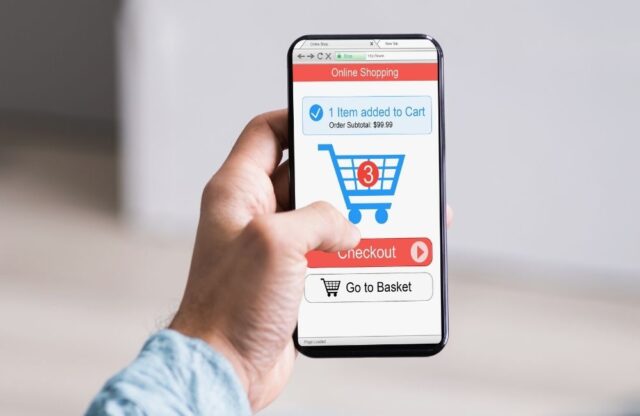Agra, known for its rich cultural heritage and craftsmanship, is home to numerous artisans producing unique handicrafts, textiles, and other traditional products. With the rise of digital commerce, establishing an e-commerce website development service focused on Agra’s artisan market presents a lucrative opportunity. Here’s a step-by-step guide to help you get started.

1. Understand the Artisan Market
Research Local Artisans
- Identify Key Players: Explore various artisan groups and individual craftsmen in Agra. Understand their products, target audience, and current sales channels.
- Analyze Needs: Assess the challenges artisans face in selling their products online, such as limited digital literacy or lack of marketing strategies.
Recognize Cultural Significance
- Preserve Heritage: Acknowledge the cultural importance of the artisans’ work. This understanding will help you create websites that reflect their values and craftsmanship.
2. Define Your Business Model
Services Offered
- Website Development: Design and develop user-friendly e-commerce websites tailored to artisans’ needs.
- E-commerce Solutions: Offer integrated e-commerce features, including payment gateways, inventory management, and shipping options.
- Digital Marketing: Provide additional services like SEO, social media marketing, and content creation to help artisans promote their products online.
Pricing Strategy
- Affordable Packages: Create tiered pricing plans to cater to artisans with different budgets. Consider offering a freemium model or discounts for first-time clients to attract business.
3. Build a Strong Portfolio
Create Sample Websites
- Prototyping: Develop sample e-commerce websites showcasing different artisan products. Use these prototypes to demonstrate your skills to potential clients.
- Highlight Features: Include essential features like responsive design, easy navigation, and visually appealing layouts that enhance the user experience.
Collaborate with Local Artisans
- Pilot Projects: Partner with a few artisans to build their websites at a discounted rate in exchange for testimonials and case studies. This hands-on experience will also enhance your portfolio.
4. Assemble Your Toolkit
Development Platforms
- E-commerce Platforms: Choose user-friendly platforms like Shopify, WooCommerce, or Magento that cater to artisans’ needs and provide scalability.
- Design Tools: Utilize design software like Adobe XD or Figma for creating visually appealing website layouts.
Payment Gateways
- Local Payment Solutions: Integrate popular payment gateways such as Razorpay or PayPal that facilitate easy transactions for both artisans and customers.
5. Create a Business Plan
Outline Your Vision
- Mission Statement: Define your mission, focusing on empowering Agra’s artisans by enhancing their online presence.
- Goals and Objectives: Set clear, measurable goals for your business, such as the number of clients to onboard in the first year or the target revenue.
Marketing Strategy
- Local Outreach: Plan how to reach artisans through workshops, local markets, and artisan fairs. Build relationships within the community to foster trust and collaboration.
- Online Marketing: Utilize social media, content marketing, and SEO strategies to create awareness about your services and attract potential clients.
6. Develop a Marketing and Outreach Strategy
Networking and Collaboration
- Join Artisan Associations: Collaborate with local artisan associations or cooperatives to gain credibility and access to a broader network of artisans.
- Host Workshops: Organize workshops to educate artisans on the benefits of e-commerce and how to manage their online stores effectively.
Leverage Social Media
- Showcase Success Stories: Use platforms like Instagram, Facebook, and Pinterest to showcase your clients’ products and success stories, attracting more artisans to your services.
- Content Marketing: Start a blog focusing on e-commerce tips for artisans, market trends, and success stories to establish yourself as an authority in the niche.
7. Provide Ongoing Support and Training
Client Training
- User Training: Offer training sessions for artisans on how to manage their e-commerce websites, including updating products, processing orders, and handling customer inquiries.
- Resource Creation: Develop user manuals or video tutorials to help clients navigate their websites and utilize features effectively.
Technical Support
- Continuous Assistance: Provide ongoing technical support to address any issues or concerns artisans may face while operating their e-commerce websites.
8. Monitor and Measure Success
Analytics and Reporting
- Track Performance: Use tools like Google Analytics to monitor website traffic, sales conversions, and customer behavior.
- Client Reports: Provide regular reports to artisans highlighting their website performance, sales trends, and areas for improvement.
Gather Feedback
- Client Testimonials: Regularly collect feedback from artisans to improve your services and address their evolving needs.
- Iterate and Improve: Use the insights gained to refine your offerings and adapt to market changes.
Conclusion
Starting an e-commerce website development service for Agra’s artisan market can have a transformative impact on local businesses, helping artisans reach broader audiences and increase sales. By understanding the market, defining your business model, building a strong portfolio, and providing ongoing support, you can create a successful venture that celebrates and promotes Agra’s rich craftsmanship. With dedication and the right strategies, you can empower artisans to thrive in the digital economy, preserving their heritage while fostering economic growth.


No responses yet